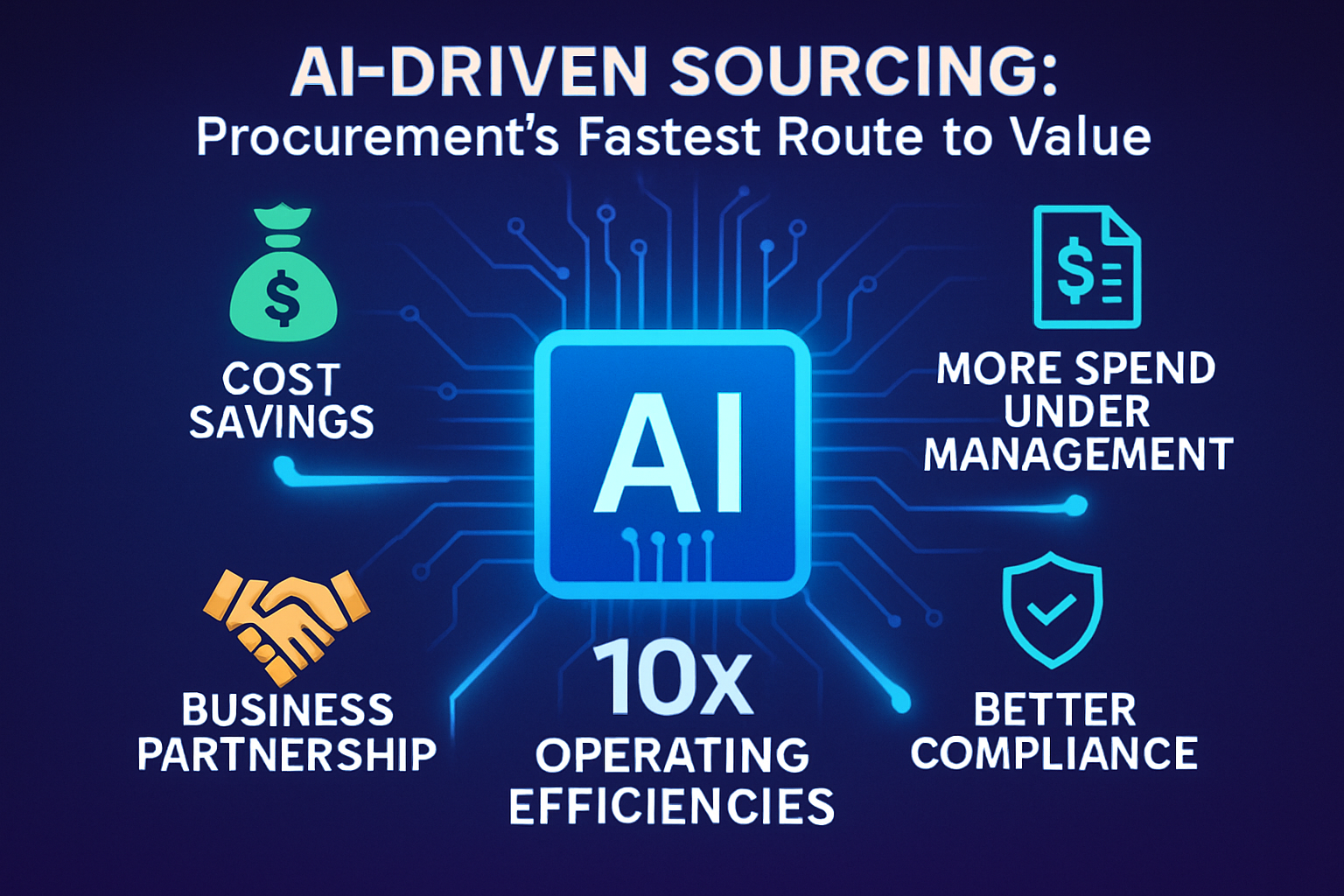Indirect Procurement and Generative AI: The Perfect Match
For all the talk of the power and potential of generative AI to revolutionize how we work and transform the productivity of teams tangible use cases that are having an instant impact on productivity and the bottom line are still in short supply. But there are some functions where generative AI is already making a tangible impact and delivering increased productivity, new efficiencies and instant cost savings. One such example is in procurement – indirect sourcing to be precise.
Indirect vs. direct spend
Indirect sourcing has traditionally been more complex and bespoke than direct – after all buying legal, HR, marketing or IT services is less straightforward than ordering the materials required to build a physical product –something that you have to define every time that you are contracting for these types of needs. And the need for indirect services often arises spontaneously unlike direct goods which can be planned and budgeted for months in advance.
Most organizations don’t have a very good handle on these costs. P&L statements almost always place indirect spend as between, at the low end, 20% of revenue to as much as 40% or more at the high end, particularly in the industries such as banking and financial services. In the average Global 2000 company this amounts to billions of dollars of cost that ultimately impacts net income dramatically.
Leaving substantial cost savings on the table
Companies like to think they’re on top of all this but in our survey of global procurement leaders, only one quarter of respondents required a transparent, competitive buying model for their indirect spend. This is obviously much different than COGS spend which undergoes incredibly aggressive negotiations, auctions and fierce competition.
All this means indirect spend is harder to oversee effectively than direct and often leaves substantial cost savings on the table as it is not managed fairly, transparently or competitively. But there is an answer as finance and procurement leaders now enjoy easy access to powerful AI-powered applications that can improve their processes, streamline operations, and boost productivity, gaining competitive edge in the marketplace.
Use gen AI to scope projects faster than ever before
As explained here, generative AI can analyze any long-form text and rough notes and automates the rest of the scoping process, drastically reducing the time taken to a professional brief that can immediately be sent to best-fit suppliers, enabling procurement teams to get to market faster. For example, GLO, our AI-powered bot, will take any notes and documents that have already created as part of project planning, such as project requirements and project challenges presentations, easily uploading one or more files in various formats (e.g., PDF, Word, Excel).
Using generative AI, GLO learns from the given information, asking thoughtful follow-up questions and offering suggested answers to expedite the scoping process. Users can easily accept, reject, add to, or edit GLO’s suggestions. And to ensure privacy, the project-related documents are not be shared with providers.
Tap into deep category knowledge
As procurement teams adapt to the current economic conditions and are challenged to do more with less, users may find themselves managing sourcing projects across areas they don’t necessarily have huge experience of. But if a buyer is unsure how to respond to a question about a topic they are not fully familiar with, generative AI can step in and fill the gap.
With its deep category expertise, GLO engages users in a thoughtful conversation and provides intelligent insights on the topic in question, enabling the buyer to move forward with confidence, having gained deeper knowledge in that area, and ensures that the specifications for suppliers are thorough and accurate.
Act fast to gain competitive advantage
With the arrival of generative AI, this technology is no longer seen as a futuristic concept but rather as a vital tool for businesses to stay relevant and competitive in an ever-changing and challenging landscape. Gartner’s recent research revealed that 70% of companies are already experimenting with generative AI use cases.
Leading companies such as BT and Santander are using our AI-powered platform to deliver double-digit cost savings across more than US$3 billion of their indirect spend, while Tesco recently announced that it had become the first in the European retail sector to introduce autonomous procurement by using our Platform to achieve new efficiencies across all its indirect spend sourcing.
Check out how our Generative AI-powered bot, GLO, delivers 70% efficiency gains, 10-20% cost savings and 20X ROI.


